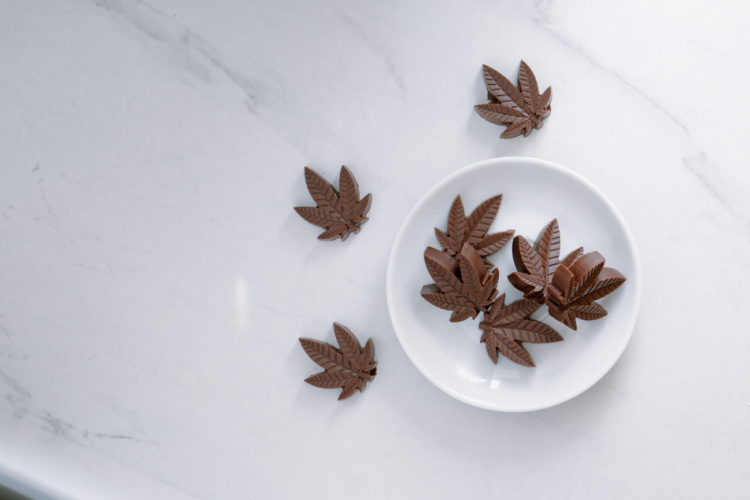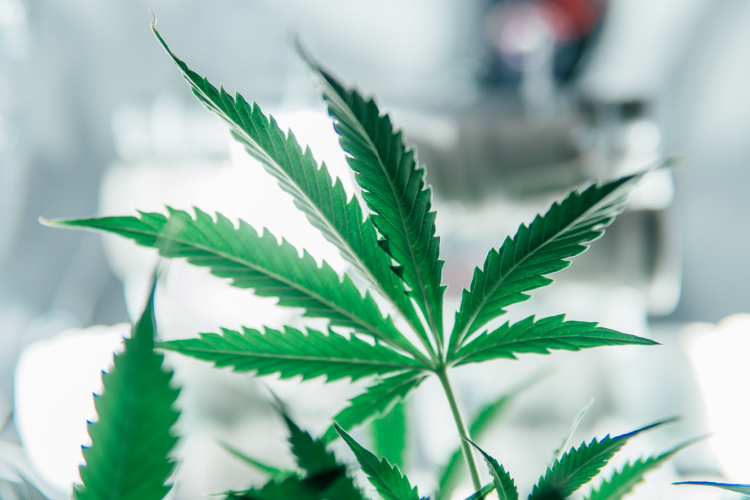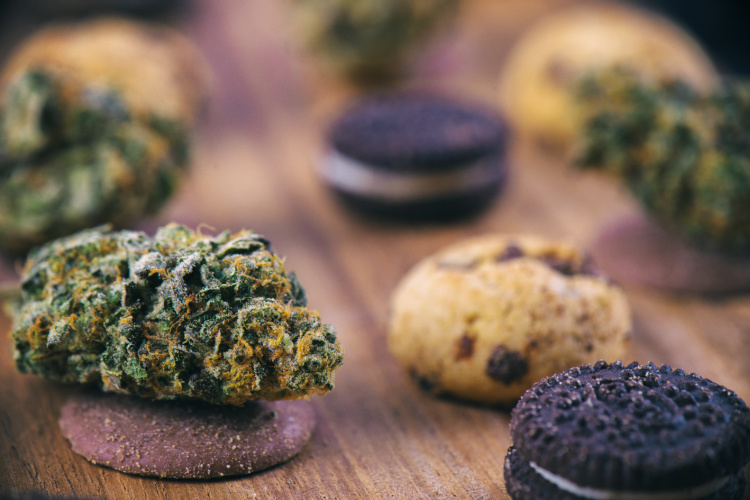When it comes to cannabis, there’s no question that flower remains the most popular way to enjoy it. However, there’s a lot that can be said about edibles, especially as the legal market continually expands and new products are constantly hitting dispensary shelves. Whether it’s cannabutter, gummies, or brownies, edibles have a long history in cannabis culture, and manufacturers continue to cater to the cannabis community’s insatiable demand for delicious goods.
With such a wide range of tasty treats in today’s cannabis market, it may be tempting to grab any bag of gummies and start munching to your heart’s content. However, if customers don’t take proper precautions when evaluating their edible dosage, what could have been a euphoric experience can turn into an unpleasant one.
To have a stress-free session that will leave you relaxed rather than anxious, learn how to dose your edibles for the best cannabis experience possible.

What Are Edibles and How Do They Work?
Let’s start with a basic definition: “Edibles” are foods or beverages that include the cannabis plant’s active and unique compounds, such as cannabinoids. Although most commonly associated with the intoxicating effects of the cannabinoid THC, edibles can contain any collection of cannabinoids, including the non-intoxicating CBD and lesser-known molecules like CBG or CBN.
When you eat an edible, these cannabinoids have to go through the digestive process rather than straight into your system through the lungs, which means the effects will take longer to enter the bloodstream. Since the liver breaks down these cannabinoids, some may assume they aren’t as intense as high-absorption products like pre-rolls or vape pens, but this isn’t necessarily the case. It’s important to consider a few extra points closely to understand the complexities of edible dosage better.
11-hydroxy-THC
First, when THC metabolizes in the liver, it doesn’t enter the bloodstream as typical THC. Instead, it transforms into another cannabinoid known as 11-hydroxy-THC (11-OH-THC). Why does this matter? In one word: Potency. According to some studies and plenty of anecdotal testimonies, 11-hydroxy-THC can make edibles feel stronger than their smokable counterparts.
So, even though THC is metabolized by the liver before entering the bloodstream, it might be more intense due to 11-hydroxy-THC’s powerful impact. Put another way: While the bioavailability (i.e., the amount of cannabinoids accessed by your body) decreases, the apparent dosage increases, leading to the feeling of stronger effects with less THC.
Onset Time and Duration
Another reason it’s more common to misjudge your milligrams with an edible dosage is its delayed onset time. Since it takes time for your body to metabolize THC, you won’t feel the hit of a cannabis edible immediately. Sometimes, edibles can take up to 90 minutes before you may feel any of its effects. Due to this delay, it can be common for consumers to take more early on—only to regret that decision later in the day.
The effects of edibles also tend to have a more prolonged impact, typically 4-6 hours or longer, versus the sharp spike and quicker comedown of a smokable joint or vape pod.
Other Factors to Consider
Many secondary factors could influence how you experience your cannabis edible dosage. For instance, even if two consumers took the same cannabis dosage, one person might feel a relaxing body buzz while the other could feel very little at all. There are many possible reasons for this, but a few of the most common factors include the body mass index (BMI), average metabolism, and the age of the person
Plus, if someone is more experienced with cannabis and has a higher tolerance to THC, chances are they can take larger doses of an edible without experiencing adverse effects. Lastly, if you already have food in your stomach, there’s a better chance your edible dosage won’t hit as hard as your body has to deal with a greater digestive load.

Is There A Recommended Dosage for Edibles?
Since everybody has different reactions to edibles—and there’s no FDA guidance on how to administer them—finding the perfect dosage for you and your body will take some time and experimentation. However, there are a few general guidelines on how different milligram ranges of THC typically impact new users.
How To Dose Edibles: General Potency Guidelines
Remember that these are general guidelines and don’t apply to everyone equally. It’s always best practice to start low and slow to avoid unwelcome side effects.
- 1 – 2.5 mg: This low edible dose tends to be perfect for new consumers who have minimal tolerance to THC or for experienced users who are more interested in microdosing during their workday without experiencing an overwhelming “high” sensation.
- 2.5 – 15 mg: In this range, most users will experience impacted coordination and perception, but it’s typically manageable if you have a decent tolerance for THC. More experienced users who no longer feel the effects of microdosing—or who want more significant symptom relief—often dose in this range.
- 30 – 50 mg: It’s likely consumers with a low tolerance to THC will have adverse effects if they start in the 30 – 50 mg range. However, those who have a high tolerance for THC might feel a stronger and more pleasant high, ideal for symptom relief in a private setting when patients don’t have to be productive.
- 50 – 100 mg: These high doses are recommended only for patients with a high tolerance for THC and who may be looking for extreme relief. The effects of THC edibles at these levels are almost guaranteed to alter perception and impair motor functions, as well as give users an intense euphoric sensation. There’s also a greater risk for adverse effects like nausea, paranoia, and body tremors at these higher levels.
Edibles for Beginners: Our Top Tips
The standard advice when dosing edibles is simple: “Go low and slow.” Just because you can’t feel the THC in a gummy within a few minutes doesn’t mean it’s not working its way through your system to create a powerful experience.
For the lowest risk of adverse reactions like anxiety and paranoia, it’s recommended that beginners to edibles should stick with a tiny concentration of THC and avoid the temptation to gobble more gummies early in your session. First-time consumers typically won’t know how a gummy feels until about 45 – 60 minutes after swallowing it—sometimes even up to 90 minutes—so it’s important to stay strict with your initial edibles dosage and take it in a controlled environment.
After you gain more experience with THC, you may want to experiment with slightly higher edible dosages at each session. The safest way to ramp up an edible’s intensity is through “incremental titration.” Put simply, this means gradually increasing your maximum edible dosage by just a few milligrams with each session and monitoring its effect on your body. It’s a good idea to keep an edible dosage journal where you record key information like the edible you took, how much THC was in your serving size, and any notable effects you noticed. The data in your edibles dosage diary will help establish your baseline tolerance and determine the levels of THC that work best in different situations.

Shop Quality Cannabis Edibles and More At Takoma Wellness Center
Interested in incorporating cannabis edibles into your routine? We’ve got you covered. Head to Washington DC’s favorite medical dispensary, where you’ll find dozens of tasty products from some of today’s hottest edibles manufacturers.
Whatever you’re looking for, Takoma Wellness offers medical marijuana patients plenty of lab-tested, potent, and high-quality cannabis products to suit your needs. If you’re in the DC area, stop by and say hello to our knowledgeable team, or browse our online menu for premium cannabis and pick up your delicious edibles in-store. You can also choose convenient delivery and get everything sent right to your door.
If you have questions about the new self-certification process in DC, just reach out! We’re happy to help.


